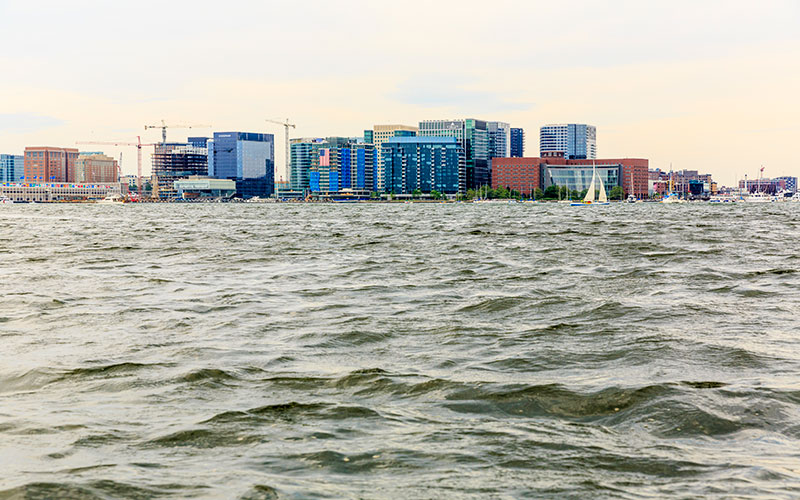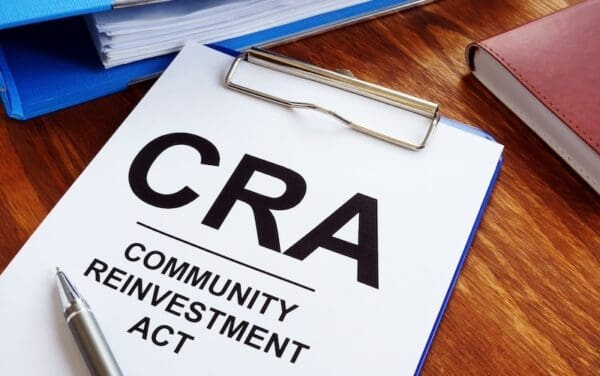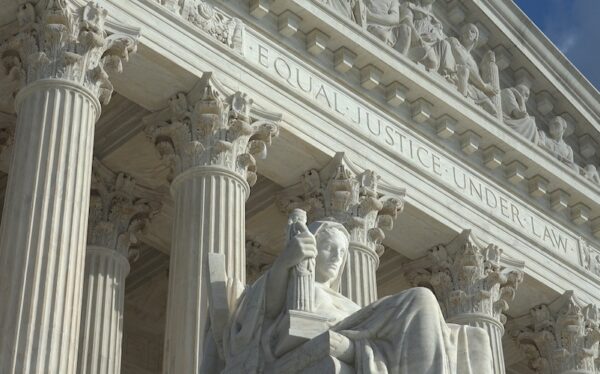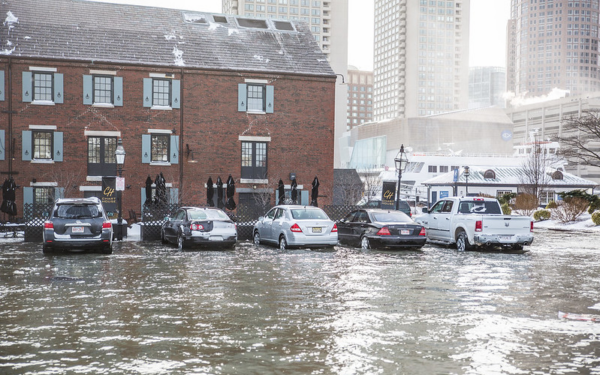
Parts of the burgeoning Seacoast District were underwater after a January blizzard. How do we ensure our neighborhoods can withstand the climate impacts to come? Photo: EcoPhotography
Barely a month ago, a historic storm blasted coastal New England – a “bomb cyclone” that brought blizzard conditions, heavy snow, and massive flooding to Boston’s Seaport neighborhood and other waterfront communities like Chelsea and Salem. As the storm raged, Twitter and Facebook feeds filled with a barrage of images showing icy waters flowing down Atlantic Avenue, drivers being rescued from stalled cars, and even a heavy dumpster picked up by flood waters and floated down an alleyway.
While we’d like to think that such dramatic happenings will continue to be the exception and not the rule, the simple fact is that climate change is upending whatever was once considered “normal” versus “rare.” Climate impacts are here now – and our coastal areas are bearing the brunt. Homes and buildings near the waterfront are already vulnerable to rising tides and flooding, especially during major storms. As such storms increase in frequency and intensity, those vulnerabilities will only become more serious.
But it won’t just be major storms putting our communities at risk. Many low-lying neighborhoods, including the burgeoning Seaport District, could face monthly inundation by the end of the century just from your average high tide. The damage such flooding will do to homes and businesses – and the economic impacts that come with it – should give us all pause.
While the City of Boston has put together plans that recommend critical steps to make its metropolitan area more resilient to these climate impacts, neighborhoods like the Seaport have been allowed to ignore the reality of these risks in their rush to build more and bigger buildings. But as the record-setting weather of early 2018 has shown us, the need for more open space and other climate-resilient measures in the city’s newest residential neighborhood is more urgent than ever before.
Protecting Our Neighborhoods Against Climate Impacts Needs to Start Now
One way to protect against climate impacts is to leverage the many benefits of open space. A public park does more than provide a beautiful place for people to gather and children to play. When built along a vulnerable coastline, it also serves as a critical buffer against flood impacts. Open space helps to absorb excess water, rather than letting it simply channel through concrete streets as we saw during the January 4 storm. These dual benefits are why CLF pushed Cronin Holdings, in a recent settlement in our challenge to its proposed luxury condo complex at 150 Seaport Boulevard, to fund the development of a new waterfront park on the South Boston harborfront.
New open space in South Boston will help defend the neighborhood (and some inland neighborhoods) from more frequent and severe flood events. But we also need to do more when it comes to climate resiliency. Developers should use forward-looking data instead of data based on the historical past when it comes to decisions about siting, elevation, stormwater management, and buffer zones.
Developers and regulators should also rethink long-term permits and licenses – the default practice for Boston developers today. Instituting a policy for shorter-term licenses will give regulators the opportunity to reevaluate a site and its ability to address climate impacts over time. This is particularly important for sites that change ownership and management from the time they were initially licensed. Providing a mechanism for this additional long-term oversight will ensure that sites continue to incorporate appropriate adaptation measures as site-specific impacts evolve and become clearer over time.
We Need Welcoming, Vibrant, and Climate-Resilient Neighborhoods for All
More than $7 billion in development is currently in hand or in the works for Boston’s Seaport District, and other coastal communities, like Lynn, are on the verge of their development booms of their own. We have an opportunity – and a responsibility – to ensure that all of our waterfront neighborhoods are vibrant, welcoming places for all and that they protect the public interest by advancing public health and safety through proactive, climate-resilient design.
It’s not too late for the Seaport District. Developers there can and should lead the way in modeling how to build for the climate to come, rather than the climate of the past, while providing meaningful access for the public to use and enjoy our revitalized waterfront.




